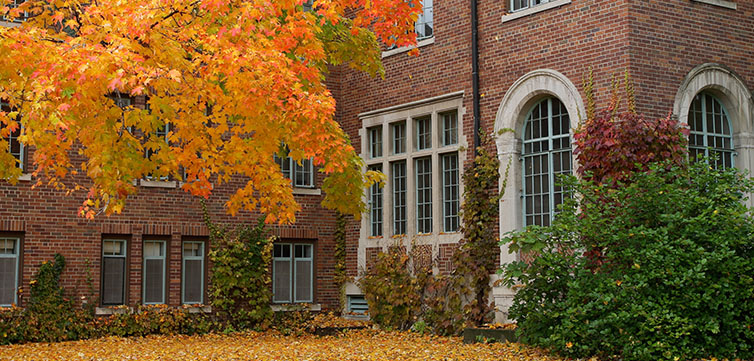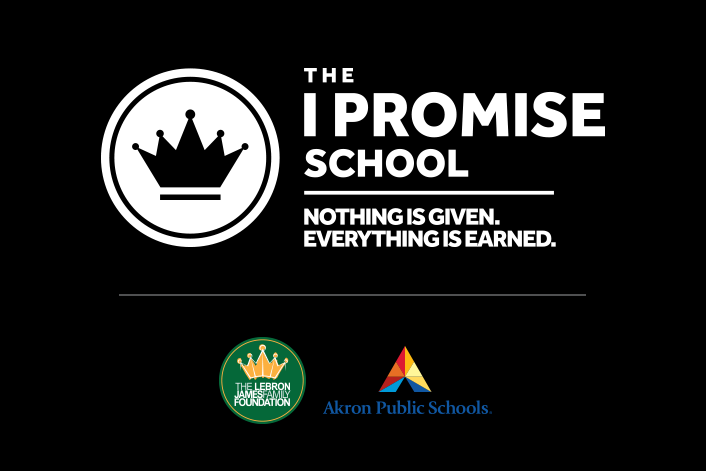Today’s New York Times includes the article “Admitted But Left Out”, found here, which chronicles how minority students at various NYC private schools feel isolated and alienated among their wealthy white classmates. Students in various schools describe how they felt uncomfortably out of place when their white classmates talked of weekends in the Hamptons and exotic vacations. They complain about feeling like a guest at someone’s house: “you can stay and look, but you don’t belong”. DJ Banton, who came to Manhattan’s Trinity School from her Brooklyn middle school through the Prep for Prep program, complained that the differences in money and experiences made the gulf between herself and her private school classmates often too wide to bridge. “The only people who could relate to what I was feeling were minorities, or they were poor,” Ms. Banton, now studying at the University of Southern California, said. “It became linked in my mind — rich, white; minority, poor.”
Anyone unfamiliar with NYC private schools reading this NY Times piece is likely to make the same link as Ms. Banton, and likely to assume that every minority private school student feels similarly uncomfortable in these schools. While the students quoted in this piece are genuine in their descriptions of their discomfort, this article makes no effort to present any alternative viewpoints. In this exhaustive discussion of the minority student experience at elite private schools, the Times couldn’t find one minority student who managed to feel comfortable among his or her white peers. Even the one recent alum quoted in this article who had fond memories of his private school experience felt “excluded by whites”. No students were included who by virtue of their friendships and/or their common experiences with some of their white classmates felt as if they belonged in their schools. (Nor could they find any white students who felt similarly economically isolated from their wealthy classmates.) These minority students exist. Some of them are our children.
No question that these schools need to focus on making sure that minority students are comfortable in their schools–our children deserve to feel as if they belong there. And it is important that we parents stay vigilant to ensure that unchecked insensitivity doesn’t harm our children. But this article doesn’t even attempt to present a fuller picture of minority student life at these schools. There is a brief mention of the impact of economics (versus race) on these students’ perspectives, but the article overwhelmingly views this issue solely through the prism of race. Even if this were a completely accurate picture, the article includes no suggestions as to what schools can do other than create films to “start the conversation”, as if this is a new issue. There is no mention of how other schools (e.g., boarding schools) have been dealing with this issue from a racial and economic perspective for decades. Eye-rolling abounds when one considers how much more interesting, informative and helpful this article could have been had the Times dug just a little deeper.
GCP readers, what do you think??






Amen!!! Well said, Carol. We all went to school with children who graduated from the “St. Grottlesex” axis of excellent boarding schools and felt none of this. And what of the white children who don’t have a house in the Hamptons and private plane? Where I come from, basing your sense of self on your possessions is called “not knowing who you are.” Thank you, Carol for setting the record straight.
SFH
my daughter graduated from a private atlanta school in 1995. the clique was academic excellence. she and other black students (primarily from east atlanta communities and downtown housing projects) thrived. they all matriculated to excellent universities. what the school did that i found lacking in public schools was that they were taught how to study, making the transition from high school to college infinitely easier.
Agreed…to some extent. I have a brother who went to Andover, and this was his biggest struggle (black middle class non-privileged southerner and white, wealthy and privileged class mates).
Susan,
I was initially appalled by your reply. However, that dissipated when I remembered that given your SES and mixed race background, you are as clueless as the non-minorities referred to in the article. Please, don’t take this as an attack; I just think that your response lacks empathy and you really have never been in a position which could allow you to empathize with these children. My son goes to an independent school and is overwhelmingly happy there; however, he does come home and ask me when we will go to the Hamptons, and he sinks when I tell him we cannot. I, of course, am comfortable with the fact that I probably will never own a home in or even go to the Hamptons (indeed, this is not one of my aspirations), but I worry about how the impact these statements of grandeur his peers make will affect him in the future. I can completely see an older version of my son making one of these films or writing one of these articles. These children are not saying they were never happy – I think what they were highlighting was that there was this one barrier they could not overcome … and they are right – encouraging diversity should not be merely an attempt to throw differently colored peas into a pot; it is a rather complex process that we have not as a society been able to delve into. Do I blame schools? Somewhat, only to a small degree. Diversity has to be a commitment on the whole community’s part.
Knew we could count on GCP to strike a chord of balance to this article, immediately! These experiences are real, yet good news needs to travel just as fast. Balance comes from empowered families. Empowerment comes from that tiny place within that says, I am going to leverage this great opportunity and manage the outcome for my family powerfully!
[…] attending affluent private schools in New York. However, Carol Sutton Lewis writes on her blog Ground Control Parenting that while this may be case for some, it isn’t the same for all […]
Excellent point! Our film, American Promise was included in this article as well. It very much addresses this issue, following two families to create a fuller picture of the unique challenges in raising african-american boys. We’d love your perspective on our film and trailer: http://on.fb.me/UkN0nB
I went from a small farm town in the Midwest to an Ivy League school. I felt the economic and cultural divide from the other students who were white like me. The few friends I made were either disaffected preppies or minorities. These friends were able to look past my ignorance and lack of exposure to see something worth getting to know. I’m grateful for it, and I learned a lot from them.
I know this is crazy, but maybe they were adressing a preponderance of minority students with the knowledge that ‘each and every’ never really fits the bill. But if it is a problem for a preponderance of minority students, then they were more than correct to speak on it.
Our children have gone to an elite private school from day 1. We go on terrific vacations, summer in fabulous places, lived in Europe for a while, but I hate to say it but my children still feel “different” (thank GOD) from many of the white children at their school, despite the financial similarities. Certainly, the NYTs could have done a better job, they always can, but I think that they were quite accurate in their assessment of what many students of color feel. Always great to have a discussion.
I have felt for some time that the Times does not dig deep enough in their articles and this one left me frustrated. Where were the poor white kids in this equation? Where were the well to do black kids?
And another thing, people of wealth tend to prefer to associate with people like themselves. This is human nature,not racism!
I guess there are “private” and then”Private” schools. I’m assuming here that Catholic schools are “private” and boarding schools “Private.” I attended Catholic school in NY in the ’70s, around the time that brother got beat with the American flag in Boston during the school desegregation battles there. I don’t think parents know the half of what goes on in terms of daily micro-aggression in these places. I had gum stuck and cheap perfume sprayed on my afro (!), jumped and locked in a football cage after the coach went home, and embarrassed by a classmate who said that my house had seven Lincoln Continentals parked around a grass shack, lol. The pressure to suck it all in knowing the sacrifices my mother was making for me to be there, coupled with daily horror stories about the daily thuggery going on in the neighborhood public schools was something I never mentioned to my mother until I was over 40 years old. The silver lining came from getting a great educational foundation from which I later achieved a PhD.
Your completion of the analysis presented in the Times article is also a very welcome correction. The larger problem here is the unfortunately very American tendency to confuse and conflate the realities and relationship of race and class. This may well explain the author’s inclination to present the experience of minority students at these schools as monolithic and her corresponding failure to explain the full and complex meaning of race in this context. It may also explain the apparent inability of many elite private schools to recruit whites whose economic experiences more closely resemble those of working and even middle class minorities. Ironically, in attempting, perhaps sincerely, to shed light on the lives of minority students at these schools, Jenny Anderson renders invisible those who are not “underprivileged” and distorts the average white reader’s view of working class minority kids who share a distinct ethnic identity with their more privileged counterparts. There are times when a journalist must do more than interview what they believe is a range of relevant subjects. In this case, the writer might have improved her perspective had she first pulled Ralph Ellison off the shelf.
Well said, Avram!
I too felt it was more of the same old kind of article. I know many children of friends who go to private schools. They have healthy social interactions and don’t appear to suffer from ‘private school depression due to skin color.’ Why can’t we hear the other narrative?
Thank you for responding to the NYT article. I will be the first person to admit that it took me quite a long time to adjust to my school; However, I’d be a liar if I said it’s a struggle every single NYC Minority private schooler faced. Everyone didn’t always feel excluded while attending these schools, much like everyone didn’t always feel included. The general consensus is what killed the NYT article for me. My circle is mainly composed of my Interschool friends, myself included, and rest assured we all had different experiences. Yes there were some points where we all felt left out , ignored, or over-looked but that varies from age all the way to school location. I spent four years becoming comfortable at my school but one of my best friends, who actually went to Trinity, would empty her bank account for her school because she loved her experience so much. I don’t believe the NYT author couldn’t find anyone whose experience differed. Also, I had quite a few Caucasian friends who were shall we say, “Less Affluent”, who felt just as left out as I did when we had those group conversations in Advisor period about what we did during our Winter Break. I would also like to have seen more light shed on programs that help students feel less uncomfortable in these schools. I’m glad they touched on the influence Prep and Oliver have in these students lives (thank you A.G.O. program) but what about D.A.I.S (http://daisorg.org/)? Most of us that were “struggling” would not have had a place to vent if it wasn’t for going to those meetings after school. What about boarding school kids because we were all clumped together prior to the Boarding / Day divide in 7th or 9th grade and therefore have struggled with similar “exclusion” issues? Furthermore, what happens once you discovered that we felt uncomfortable? I’m very glad that the NYT chose to focus on this topic because it IS an issue but where does the conversation go from here? People have been discussing this issue since long before I started high school in 2003, does no one think it’s time for action or is this article hinting at the thought that minority students will never feel comfortable in a NYC Private school? Shade. Food for thought.
Note: D.A.I.S. is the Diversity Awareness Initiative for Students.
Reading the article, I felt the same way you did in that it failed to provide more permutations of individuals attending the school. However, I don’t hold the writer or the people producing these films at fault for not coming up with more if not better solutions. I dislike the notion that a problem–real or perceived–requires a solution. Does that mean we must choose not discuss it at all and therefore sweep it into our subconscious? Not only is the article important to me because I suffered a similar discomfort in High School, but because Ms. Anderson put the issue into the white mainstream. As a result, I feel I and others are empowered to discuss without the stigma of victimization and antagonizing those who hate discussing race. I think the only solution is time, generational growth, and if Obama had his way…a large scale distribution of wealth. Although I hate to compare “deficiencies” or atrocities (Holacuast v Slavery), I believe the quote about the black girl feeling ugly substantiated the idea that race remains the bottom line. I don’t know why that is, but I suppose it is because it’s more forthright than ones socioeconomic status. I understand more perspectives, but what was that suppose to suggest? Maybe disprove any hypothesis put forth by Ms. Anderson? This is tough and there is no objective way to determine the reality of how minorities feel. Empirically, I’d suggest that whites attending a homogenous black environment would feel the same discomfort. In other words, I dont think this discomfort is unique to minorities or anyone else. Instead I believe in order for blacks to attend the finest schools, the by-product is sometimes discomfort; whereas, whites can more likely go their entire life avoiding being the minority. With regards to screening films, I believe it’s a good step because kids may have not developed the voice I didn’t to share their discomfort with their peers.
Lastly, I can most definitely agree that this discussion is exhaustive and almost nauseating. Unfortunately and similar to many issues regarding minorities (mainly blacks), this is a polarized debate that becomes circular. My dad and I completely disagreed on any of this being an issue. I believe he failed to recognize the existence of this discomfort, no matter how small as an excuse waiting to be used. My point is, this discussion boils down to two different ideologies. One that believes in one’s agency to do better. The other that is caught up with injustices–especially when an answer isn’t available, but also believes in black exceptionalism.
Anyways, I tailed off into incoherency, but hopefully you get my drift.
Great blog!
Though its true that intellectually one desires a more balanced editorial piece on this topic sometimes you just have to ask yourself – what do we do and how do we feel if this is it? If this is the truth as it (still) exists today?
One can’t live in a bubble with a ton of optimism and hope and think there are going to be other stories to balance this issue. It is what it is and we just all have to deal with it and that is actually okay.
One can only affect change and have real hope when one deals with the truth. Isn’t that how it works for all issues that need to be solved or helped along?
Reading the article, I felt the same way you did in that it failed to provide more permutations of individuals attending the school. However, I don’t hold the writer or the people producing these films at fault for not coming up with more if not better solutions. I dislike the notion that a problem–real or perceived–requires a solution. Does that mean we must choose not discuss it at all and sweep it into our subconscious? Not only is the article important to me because I suffered a similar discomfort in High School, but because Ms. Anderson brought the issue from the dinner table into the white mainstream. As a result, I feel I and others are empowered to discuss without the stigma of victimization and antagonizing those who hate discussing race. I think the only solution is time, generational growth, and if Obama had his way…a large scale distribution of wealth. Although I hate to compare “deficiencies” or atrocities (Holacuast v Slavery), I believe the quote about the black girl feeling ugly substantiated the idea that race remains the bottom line in discomfort. I don’t know why that is, but I suppose it is because it’s more forthright than ones socioeconomic status. I understand more perspectives would appear effective, but what will that then suggest? Maybe disprove any hypothesis put forth by Ms. Anderson? This is tough and there is no objective way to determine the reality of how minorities feel. Empirically, I’d suggest that whites attending a homogenous black environment would feel the same discomfort. In other words, I dont think this discomfort is unique to minorities or anyone else. Instead I believe in order for blacks to attend the finest schools, the by-product is sometimes discomfort; whereas, whites can more likely go their entire life avoiding being the minority. With regards to screening films, I believe it’s a good step because kids may have not developed the voice (I sure didn’t) to share their discomfort with their peers. This process of drawing awareness will ultimately have a good impact and help other empathize with all sorts of individuals that feel not included. Unfortunately, for whatever reason it may be–good or bad, these kids may suffer from inorganic interactions from now on. But similar to affirmative action, I believe the drawback will diminish in time.
Lastly, I can most definitely agree that this discussion is exhaustive and almost nauseating. Unfortunately and similar to many issues regarding minorities (mainly blacks), this is a polarized debate that becomes circular. My dad and I completely disagreed on any of this being an issue. I believe he failed to recognize the existence of this discomfort, no matter how small as an excuse waiting to be used. My point is, this discussion boils down to two different ideologies. One that believes in one’s agency to do better. The other that is caught up with injustices–especially when an answer isn’t available, but also believes in black exceptionalism.
Anyways, I tailed off into incoherency, but hopefully you get my drift.
Great blog!
I am truly grateful to the owner of this website who has shared this enormous post at at this
place.